Original literature and history Jun Haoran literature and history
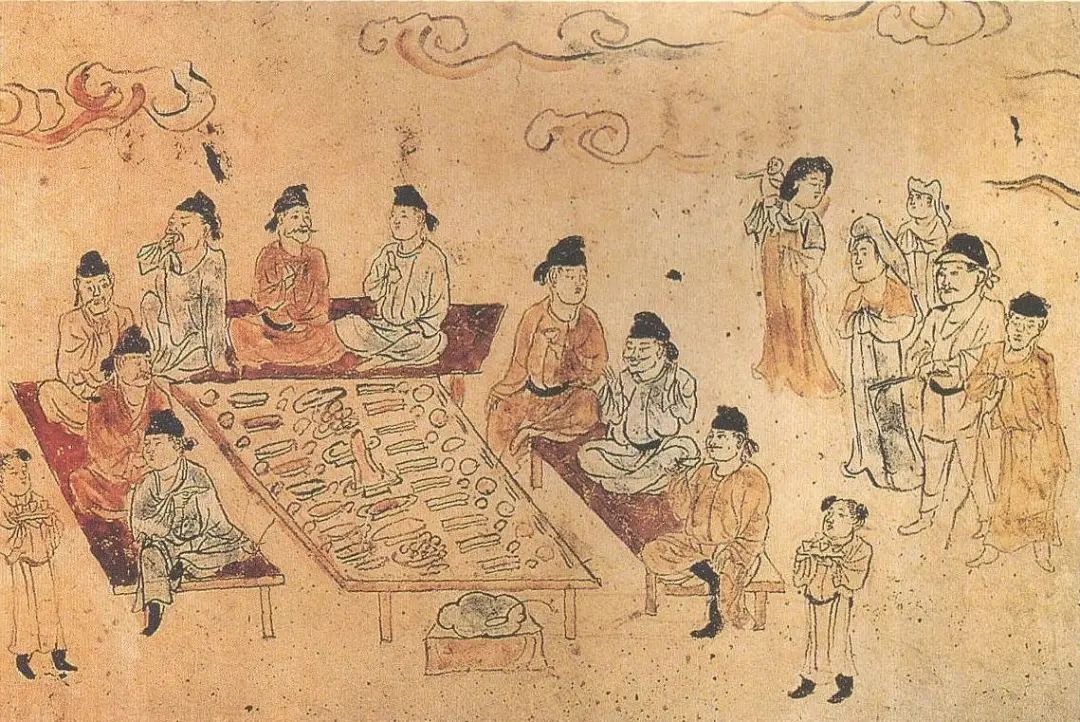
There are two boys serving tea in the front of (part of) Yan Yin Tu in Tang Dynasty.
An archaeological report published by the archaeological team of Shandong University officially announced the discovery of the world’s earliest tea in the ruins of the ancient city of Guo in Zoucheng, Jining, Shandong. Prior to this, the earliest tea in the world was found in the burial pit of Yangling, Emperor Liu Qi of the Han Dynasty. This discovery of Shandong University directly pushed the historical upper limit of tea drinking in China for more than 300 years. Tea, as a kind of drink, has entered the daily life of China people for a long time. With the development of history, not only tea itself and its related material forms have been developed, but also tea has entered the spiritual world of China people and become a sustenance of the elegant people. When the tea inscription meets the ancient paintings, those long-gone tea events are vividly presented in front of us. Let’s follow these ancient paintings to see the tea events in China!
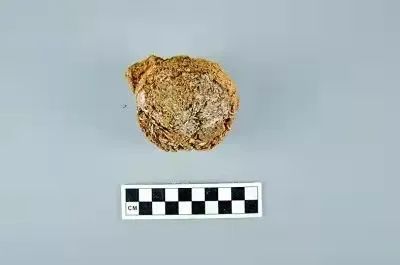
Tea found in the ruins of the ancient city of Guo in Zoucheng, Jining, Shandong Province
I. Tea Affairs in Tang and Song Dynasties
China people’s acceptance of tea is a gradual process. Legend has it that tea originated from Emperor Yan Shennong, but at this time it was used as a medicinal drink. In the Warring States period, people in China had drunk tea. In the Han Dynasty, tea was still used as a medicine or food to participate in people’s lives.
The earliest and most reliable record of tea can be found in "Tong Yue" written by Wang Bao of Sichuan in the Western Han Dynasty. It records what a servant should do every day, and one of them is "brew tea does everything … Wuyang buys tea". Later, tea pots engraved with the word "tea" in the Eastern Han Dynasty were unearthed in Zhejiang and other places. This shows that tea has been quite popular in the Han Dynasty.
Although there were sporadic records about tea in Wei and Jin Dynasties, the tea culture at this time was still in a hazy period. Tea culture gradually surfaced, not only in ancient paintings, but also in systematic records, starting from the Tang Dynasty. The Classic of Tea by Lu Yu, a native of Tang Dynasty, is the first monograph on tea culture in the history of China, while The Orchid Pavilion of Xiao Yi is the first ancient painting with brew tea in the history of our country.
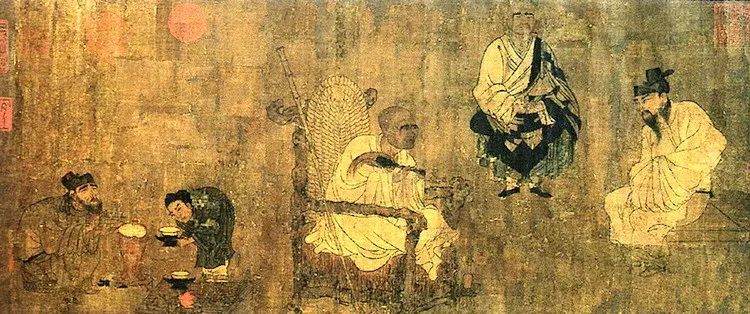
The Song Dynasty’s Copy of Xiao Yi Earning Lan Ting Tu, which was anonymous in Tang Dynasty.
The popularity of tea in the Tang dynasty was recorded in detail in the sealed "Feng’s Experience". It is said that during the Kaiyuan period, a monk in Lingyan Temple in Taishan forgot to eat and sleep in order to study Zen, and he relied on drinking tea to eliminate his fatigue and hunger. After the news spread, it became a custom to follow suit. From Shandong to Chang ‘an, the then capital city, and Chasiying Street, the world could beg for a cup of tea as long as it invested money.
After the publication of Lu Yu’s Tea Classics in Tang Suzong, tea culture gradually became an art, which was favored by ministers and nobles. "When the tea ceremony is popular, all princes and courtiers will drink.".
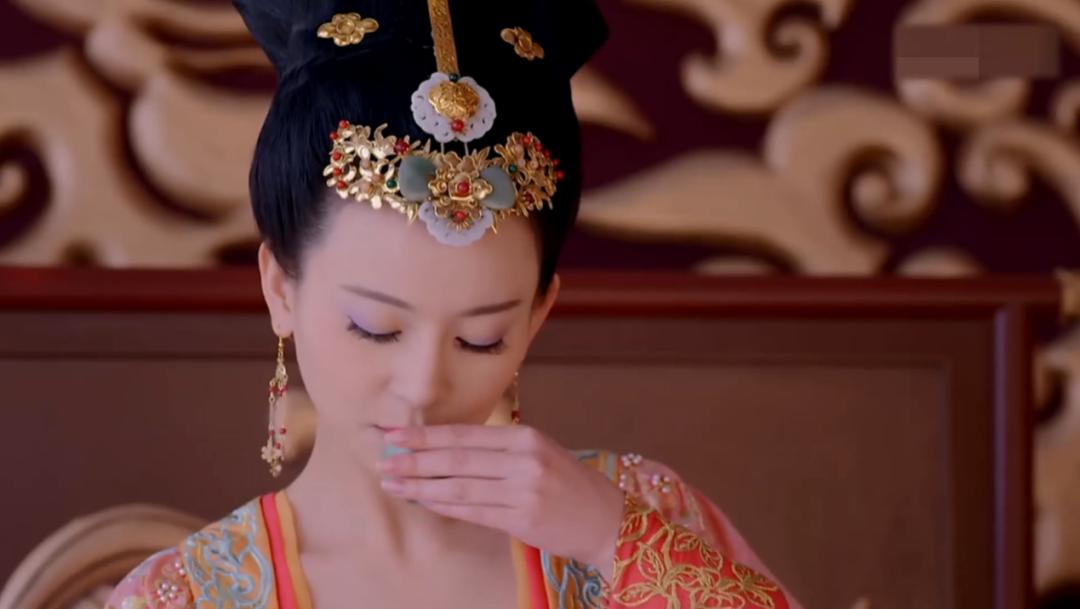
"Wu Mei Niang Legend" Tea tasting in upper class
A picture of Gong Le Tu in the Tang Dynasty depicts twelve beautiful women playing music around the table. They are holding pipa, guzheng, sheng and other musical instruments. There is a big tea basin on the table, and a maid-in-waiting is taking tea from the tea basin and giving it to everyone. A beautiful woman is making a drink, which shows that tea has become an essential thing for these princes and nobles to have fun every day.
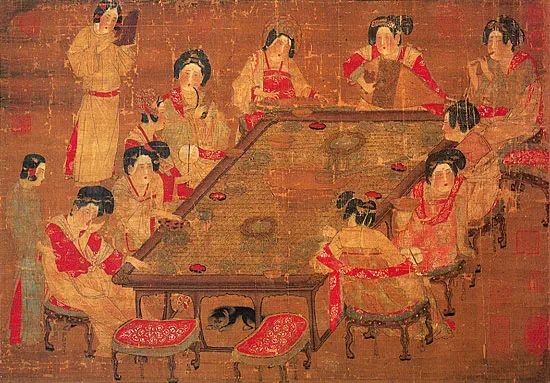
Gong le tu in Tang dynasty
According to Lu Yu’s Book of Tea, people in the Tang Dynasty can be divided into boiled tea, nunnery tea and tea. In the Tang dynasty, people also called boiling tea fried tea. Although their names are different, their methods are generally the same. Use a "tea pot" or "tea kettle" for "boiling tea". After the tea is cooked, you need to use a tea spoon to take it to other places. The "fried tea" uses "tea pan", and after the tea is cooked, it can flow directly from the spout to the container.
Temple tea is now brewed directly with boiling water, while tea is special. In the Tang Dynasty, people mixed tea and porridge into a kind of tea porridge, and this drinking method was called "porridge".
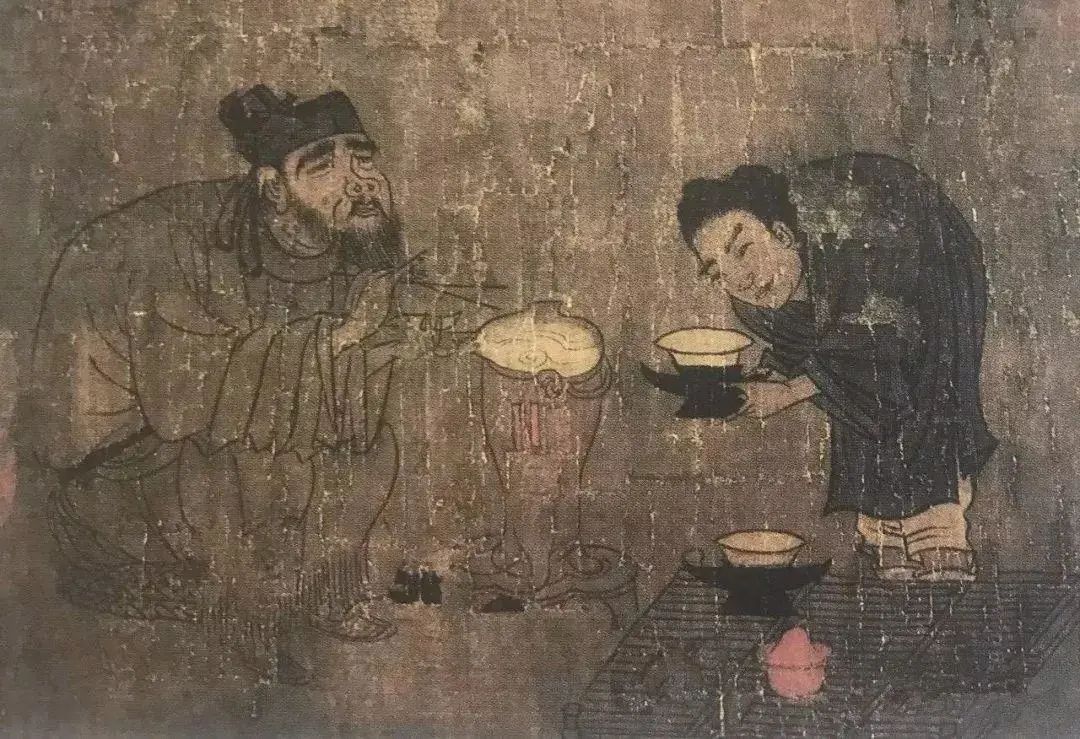
"Xiao Yi Earns Lanting Map" Part
The painting "Xiao Yi Earns Lanting Map" tells the story of Xiao Yi defrauding Lanting Preface from the debating machine for Emperor Taizong. In the lower left corner of the painting, there is a stove boiling tea, and an old man is squatting on the ground, holding a bamboo pod and stirring the tea powder in the tea pot. The old man is on his back, his nostrils are enlarged, and he seems to appreciate the rich tea fragrance. While another teenager is holding a black lacquer lamp holder and a white porcelain bowl, leaning over and waiting to pick up the tea that is about to be fried. The instrument used by the old people to cook tea is a tea jar. After the tea is cooked, it can be poured directly into the tea cup offered by the young people. This way of frying tea was a common way in the Tang Dynasty. Besides, we can also see tea-making tools such as saucer, tea mill and tea combination in this painting.
The image expressed in "Xiao Yi Earns Lanting Map" itself is that guests come to cook tea, which inadvertently reflects the skills and related tools of tea cooking in Tang Dynasty, and shows that the method of tea cooking in Tang Dynasty has reached maturity and entered people’s daily life. It is in line with Lu Yu’s sentence: "When you are immersed in the customs, it is prosperous in the country, and the two capitals are between Jing and Yu, thinking that it is better than drinking in the house."
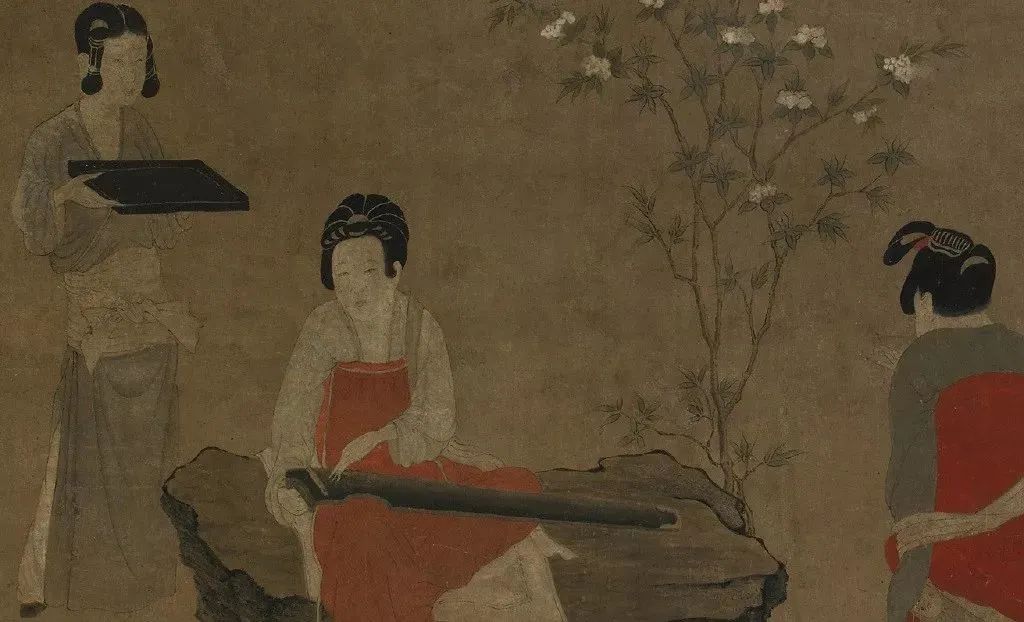
The maid on the left side of Tang Zhou Fang’s "Tune the piano and compose the tea" serves tea.
Song people are better at tea than Tang people, but they have the habits of Song people. Tea was divided into "piece tea" and "loose tea" by Song people. "Piece tea" is a cake that has been squeezed into cakes, while "loose tea" is tea that has not been squeezed. However, Song people like tea powder, that is, grinding tea into powder, so whether it is "piece tea" or "loose tea", it is actually tea powder.
Because of the different forms of tea, the way of drinking tea in Song Dynasty was different from that in Tang Dynasty. Tang people like to "make tea", while Song people like to "order tea". The so-called "tea-ordering" means putting the tea powder in a tea cup, adding soup to it with a tea bottle, and finally stirring the tea powder. "Ordering" also means drip. This process seems simple, but it is actually very learned. The appearance of ordering tea, a way of drinking tea, also led to the emergence of a competition about tea cooking in Song Dynasty-fighting tea.
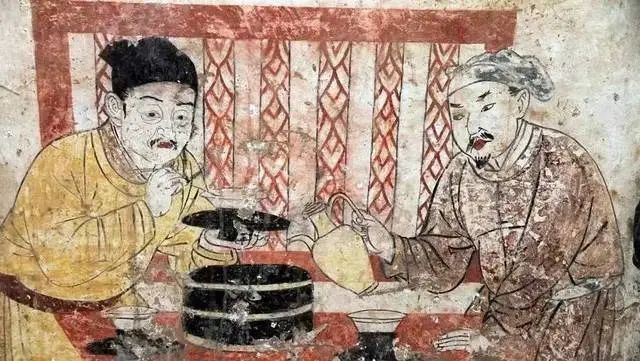
Prepare tea map
Tea fighting, also known as "tea fighting", has several processes. At first, it is necessary to iron the tea cup, and then "paste mixing", that is, pour the tea powder into the tea cup. The most important process is to pour boiling water and stir the tea leaves with teaspoons and tea baskets. Especially when mixing with a tea basket, we should pay attention to the priorities. After mixing a bowl of good tea soup, the foam floating on the surface should be evenly spread and the foam should be close to the tea cup, which is called "biting the cup". However, if the foamed camellia is not evenly spread to reveal a gap, then the mixing fails, which is called "cloud foot scattering" or "water foot scattering".
In the Song Dynasty, we can see several people in folk costumes squatting and fighting for tea, which is a good picture of folk fighting for tea.
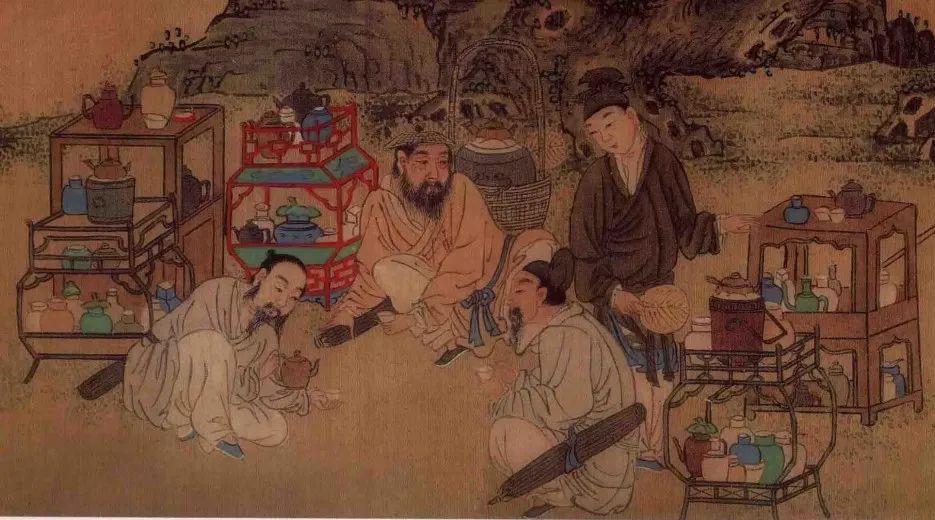
Song dynasty’s anonymous "dou cha tu"
Generally speaking, not all tea leaves will use tea in this way. Song Wangguan said in "Learning Forest" that "the best of tea is to sip it; Those who fry and sip it are all common ",that is to say, good tea will use the way of ordering tea, and ordinary tea will still be used to fry tea." But in fact, almost everyone in the Song Dynasty used some tea when drinking tea.
Song people like tea, from the emperor or the public to the common people. Song Huizong once painted a picture of Wen Hui Tu, which was about the literati’s elegant collection of tea. The lower part of the painting depicts several waiters waiting for soup and ordering tea, showing the literati’s love for ordering tea at that time. In addition, in order to meet their own demand for tea, the royal family in the Northern Song Dynasty specially sent a transshipment ambassador to Beiyuan, Fujian Province to make tribute tea, with the name "Dragon and Phoenix Tuancha". Song Huizong once praised it as "Dragon and Phoenix Tuancha, which is famous in the world", and even wrote "Daguan Tea Theory" himself, becoming the only emperor in China history who personally wrote the tea theory.
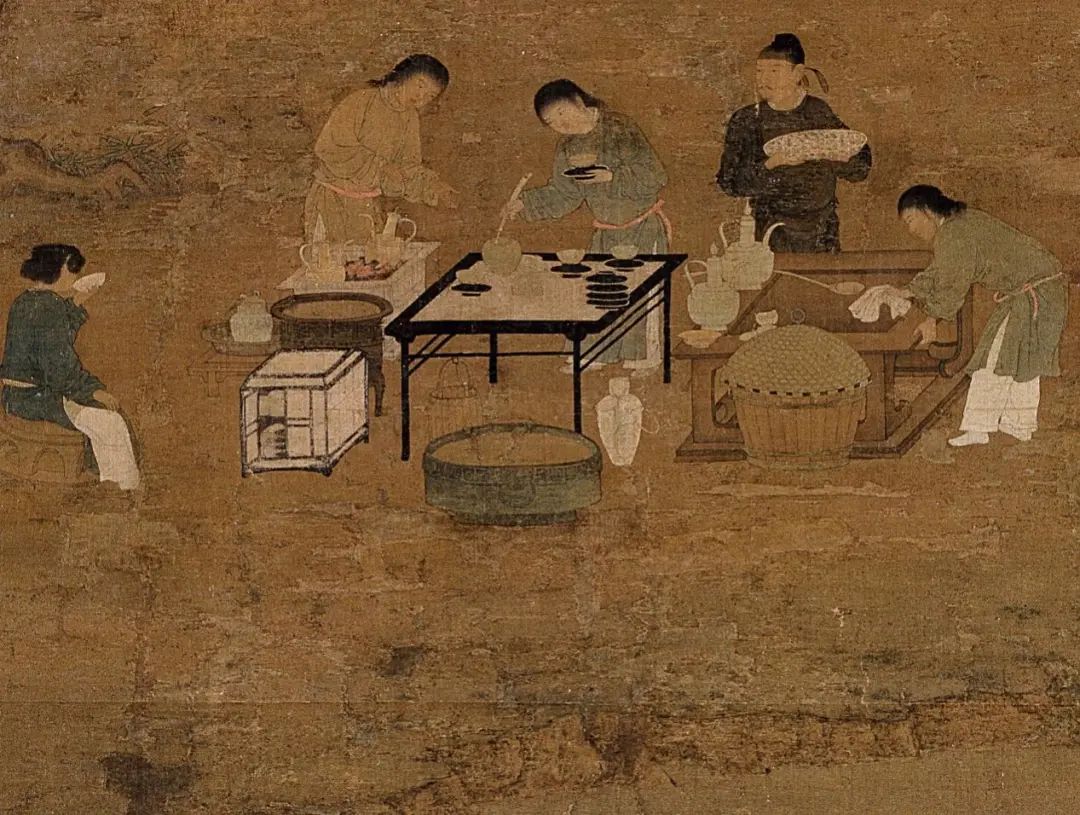
Wen Hui Tu by Song Huizong in Northern Song Dynasty (partial)
In the masterpiece The Riverside Scene at Qingming Festival, we can find tea shops everywhere in the bustling Bianjing street, which became the most important place to meet the material and spiritual needs of the citizens in the Northern Song Dynasty.
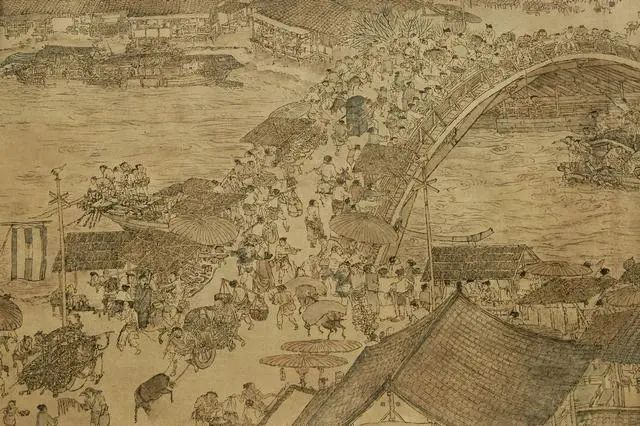
Song Zhang Zeduan’s Riverside Scene at Qingming Festival (partial)
Second, tea affairs in Yuan, Ming and Qing Dynasties
The Yuan Dynasty was a dynasty established by Mongolian ethnic minorities. Because of the difference in diet, the Mongols were not very interested in drinking tea. In addition, the country of the Yuan Dynasty was not very long, so the drinking habits of the Yuan Dynasty basically followed the way of drinking tea in the Song Dynasty. However, the Yuan Dynasty was a transitional stage. At that time, there was a tea-making method of "soaking soup to remove smoke and decocting it with soup" in the south, which was basically consistent with the tea-drinking method in the Ming and Qing Dynasties.
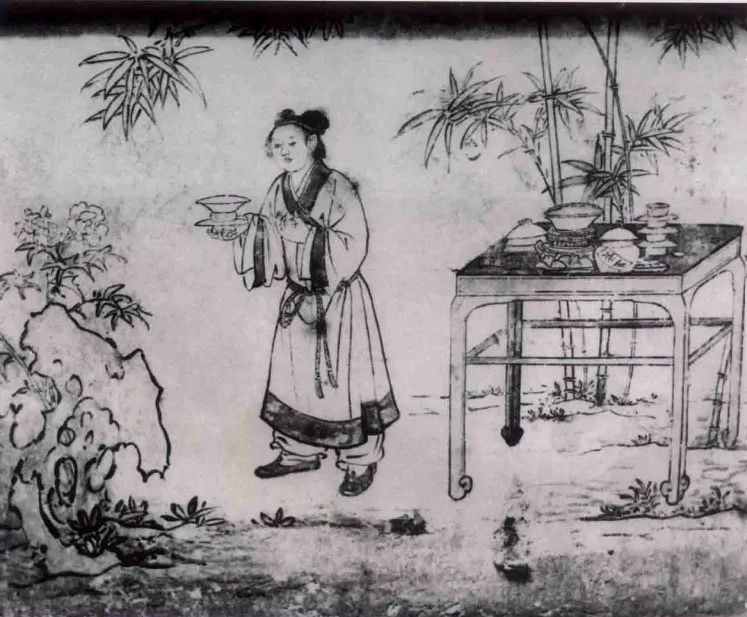
Yuan mural Dao Tong
By the Ming Dynasty, there had been another great change in the way of drinking tea in China. Because the manufacturing process of tea powder is complicated, Ming Taizu officially abolished the tribute tea in Fujian in the Song Dynasty in the 24th year of Hongwu, and changed the tea powder to make tea. The form of tea was formally changed from group tea and cake tea to loose tea, which led to the general way of making tea now. Tea powder was abandoned, and the method of ordering tea was naturally abandoned. Over time, people in the Ming Dynasty did not know what the method of ordering tea was.
Xu Cishu, a Ming Dynasty man, recorded the way of making tea in Tea and Vegetables Cooking Point: "First, hold tea in your hand, once the soup is put into the pot, throw the tea soup at hand, and cover it with a lid. When you breathe three times, you will pour it into the pot again." Although the Ming people still pay attention to the first tea soup for washing tea and the second for drinking, this way of making tea has been much simpler than the tea frying method in Tang Dynasty and the tea ordering method in Song Dynasty.
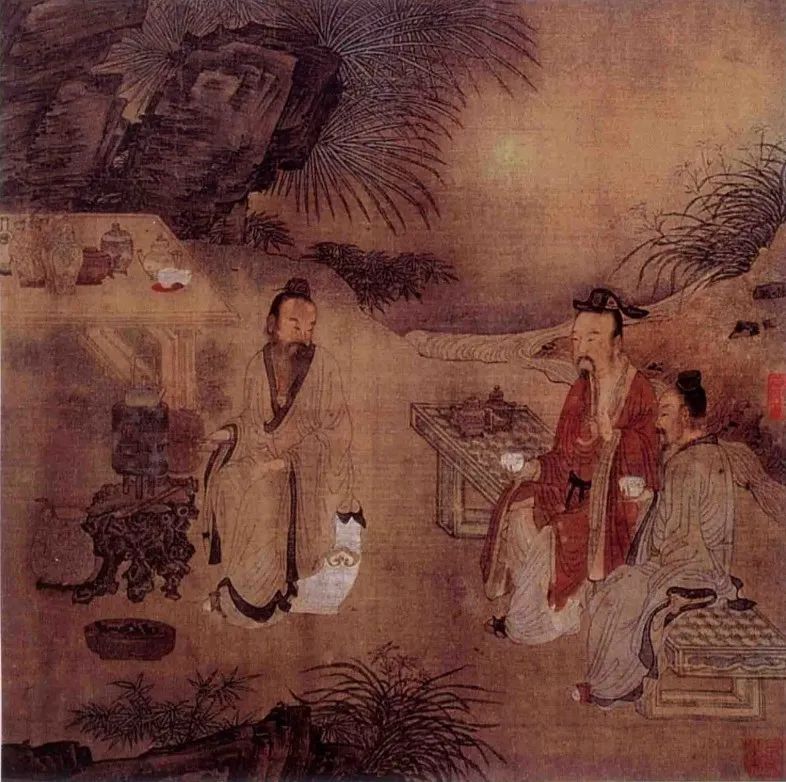
Ming anonymous "tea tasting map"
In Wen Zhiming’s Tea Tasting Map, we can see a grass hiding under a tree, two people sitting opposite each other in the cottage, a teapot and two white porcelain teacups on the middle desk, and a boy cooking water in the side room. Tea drinking is born with a quiet temperament. Drinking tea in downtown is lively, but in such an environment as painting, tea drinking pays attention to quietness, and it is the most desirable way for scholars in Ming Dynasty to discuss tea in quietness. Zhang Yuan, a Ming Dynasty scholar, said in Tea Record: "Drinking tea with few guests is more expensive, but many guests are noisy, and noisy is lacking in elegance." It can be seen that the tea drinking of Ming scholars is a static word, which also gives a different sustenance to tea tasting.
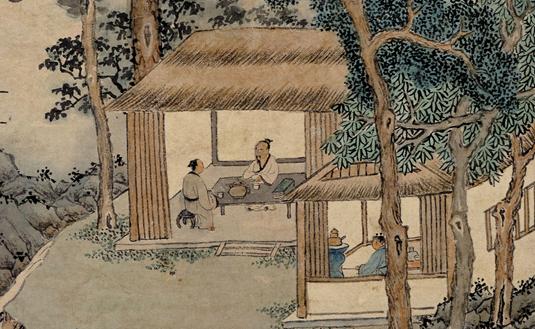
Tea Tasting Map by Wen Zhiming in Ming Dynasty (partial)
When we compare this picture with the Song Dynasty’s "Dou Cha Tu" mentioned before, we will find that with the disappearance of tea powder and tea ordering, tea sets have been simplified, and the tools needed for drinking tea in the Song Dynasty, such as tea grinders, teaspoons and tea baskets, are no longer popular, so that scholars in the middle and late Ming Dynasty will be confused when they read the tea baskets written by Song people.
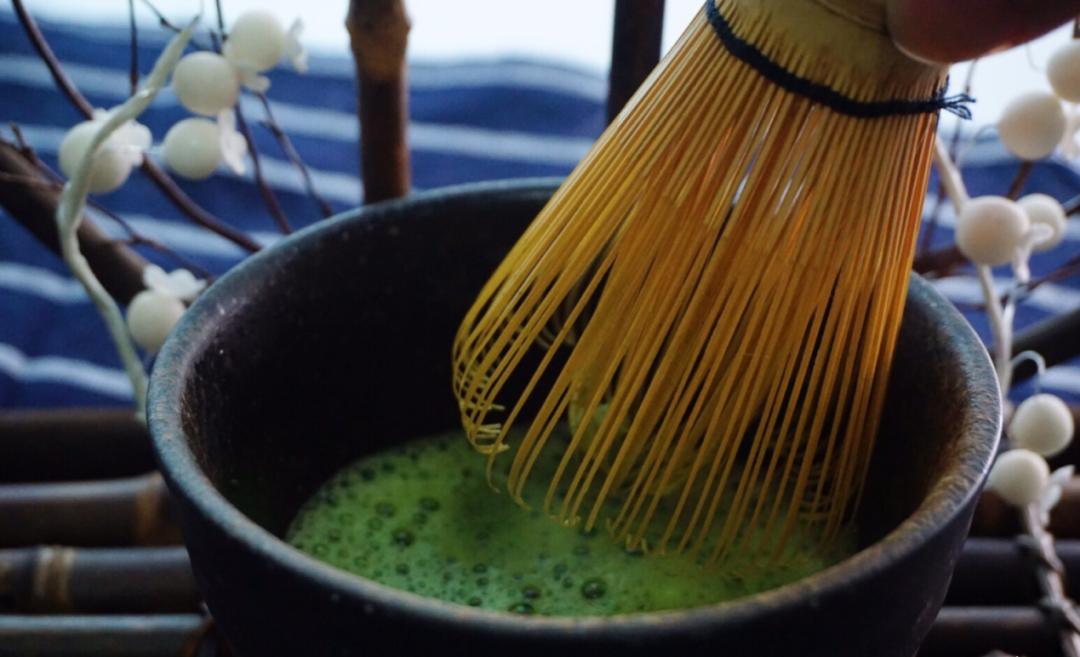
Tea basket
Although the procedures for drinking tea and tea sets have been simplified, the quality of life of the literati in Ming and Qing dynasties has not decreased at all. They have played new tricks on the remaining teapots, teacups and tea cans, and the tea sets in the Ming and Qing dynasties are more exquisite and exquisite.
Teapots in the two dynasties were made of purple clay pots, and Wen Zhenheng, a Ming dynasty, said in "Chronicles of Long Stories" that "the teapot is made of sand, and the cover is neither fragrant nor cooked." Ming people also prefer small pots, it is best to have a small pot for each person at the elegant meeting, so as to enjoy themselves.
Porcelain firing in Ming and Qing Dynasties reached its peak, which was reflected in tea ware’s style. Most of tea ware are exquisite, but the style is according to the emperor’s preference. Yong Zhengdi in Qing Dynasty likes elegance, while tea sets in Yongzheng Dynasty are mostly simple in shape, fresh and elegant in style, giving people a pleasing feeling. For example, in Yongzheng period, there were two Yixing Kiln Zisha tea pots, one of which was hexagonal, with the word "before the rain" engraved on the lid, while the other was round and round, with the word "Zhulan" engraved on the lid.
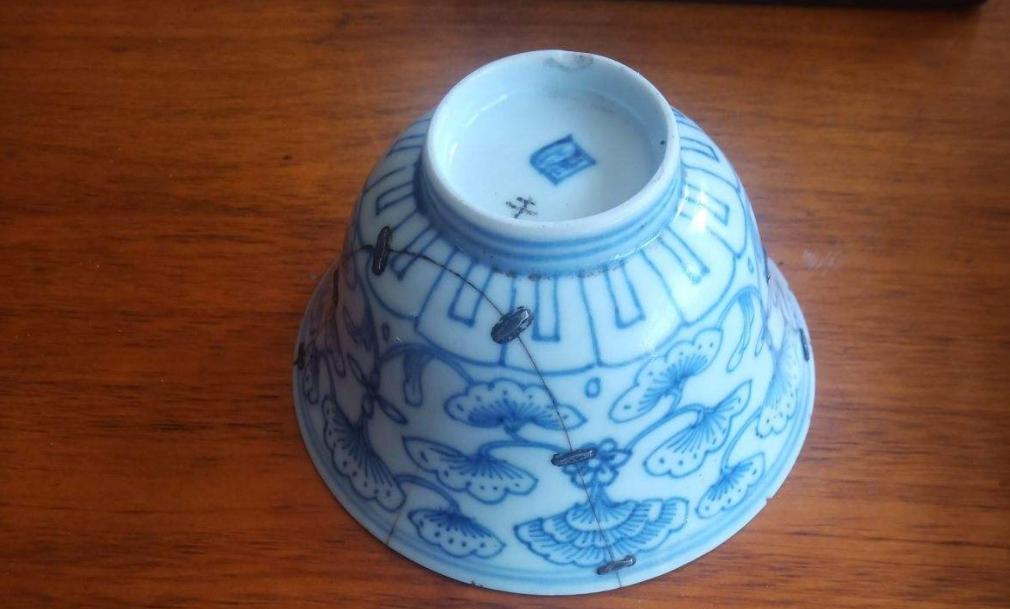
Objects in Yongzheng period
However, Emperor Qianlong advocated magnificence, so the style of tea set in Qianlong Dynasty was warm and gorgeous, and glaze and other techniques were widely used, with bright colors and diverse patterns, with the intention of highlighting the weather of a prosperous generation. For example, in the Qianlong Dynasty, a sapphire Sanqing tea poem covered the bowl. The sapphire was transparent, covered with gold patterns, and the bowl was exquisitely carved with poems. But this is also generally speaking, there were gorgeous tea sets in Yongzheng Dynasty, and there were also elegant tea sets in Qianlong Dynasty.
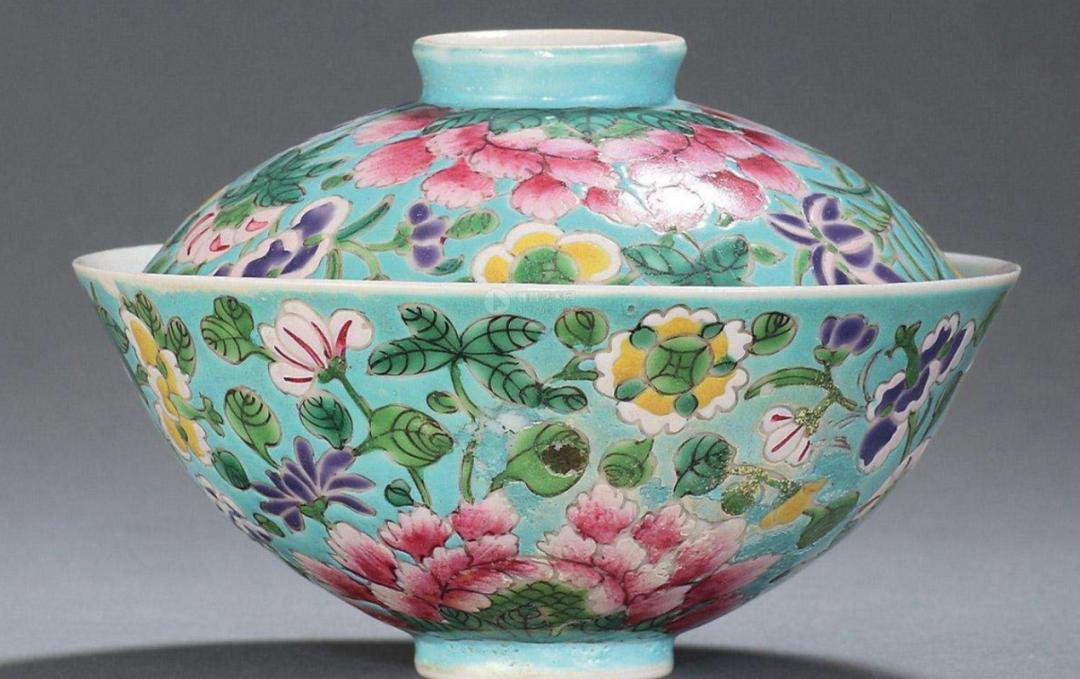
Qianlong period artifacts
It is worth mentioning that the rulers of the Qing Dynasty kept their own tea culture-milk tea when they accepted the tea culture of the Han nationality. According to records, Manchu people still kept the habit of drinking milk tea after entering the customs, and the palace also set up a special institution to provide milk tea. The Qing emperor liked to have a cup of milk tea before eating, and the milk tea and other drinks in the court were also distributed according to the quantity. The rulers of the Qing dynasty loved milk tea, and even when they went hunting, they didn’t forget to have a drink.
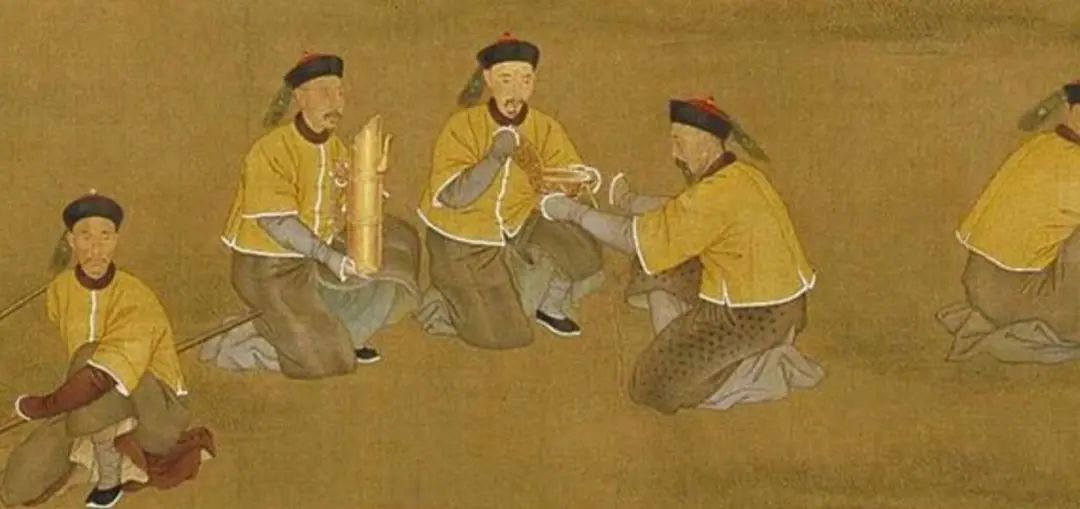
Ranz Ning’s Hongli Hunting Dinner in Qing Dynasty (partial)
Wen Shijun said
The origin of tea culture in China is very early, and ancient ancestors have already recognized the medicinal function of tea. With the development of history, tea has increasingly entered people’s daily lives, and the fragrance of tea can be smelled in the deep gardens of the palace, in the streets of the streets and in the barren hills and wild forests. The rise of tea culture has led to the change of the material form of tea drinking, and also enriched the spiritual life of the ancient people, and tea tasting has been given a different spiritual sustenance by the ancient people. Therefore, China’s tea culture includes both material and spiritual aspects.
reference data
Qiu Jiping: Chinese Tea Painting, Zhejiang Photography Publishing House, 2014.
Liao Baoxiu: Tea Affairs and tea ware in Past Dynasties, Palace Museum Press, 2017.
Zhao Qiuli and Fan Feng: The Archaeological Team of Shandong University Discovered the World’s Earliest Tea Remains, Guangming Daily, November 26, 2021.
(Author: Haoran literature and history Jingsu)
The pictures used in this article are all from online search unless otherwise specified. If there is any infringement, please contact the author to delete them. Thank you!
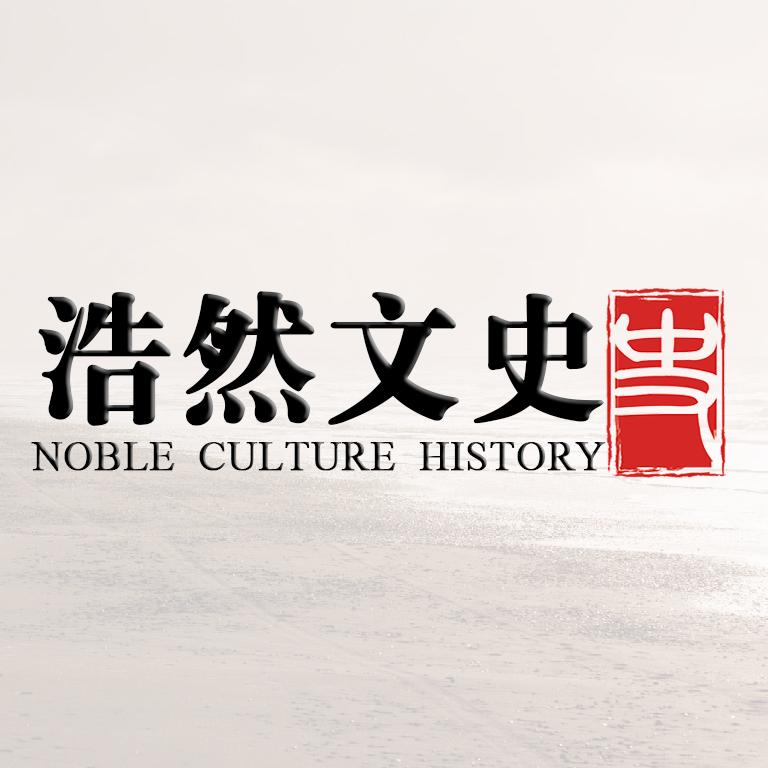
关于作者